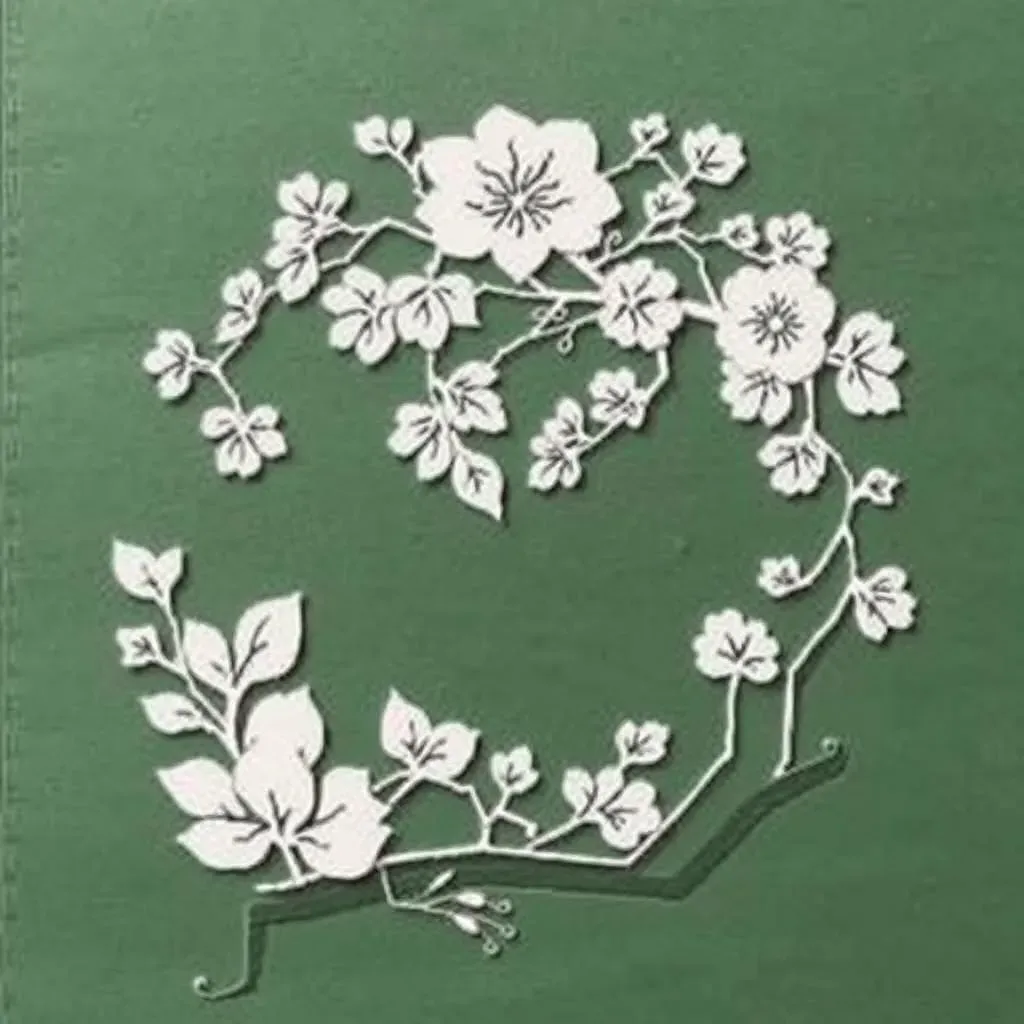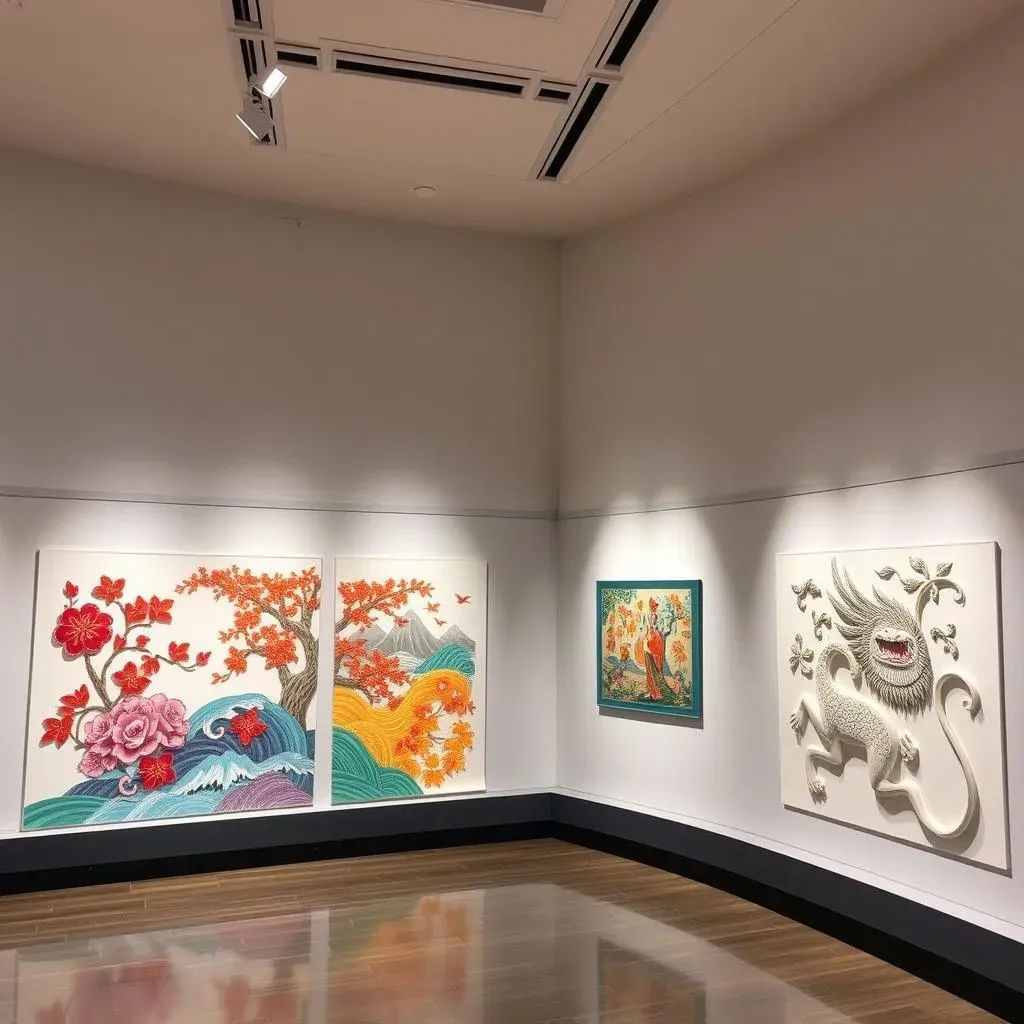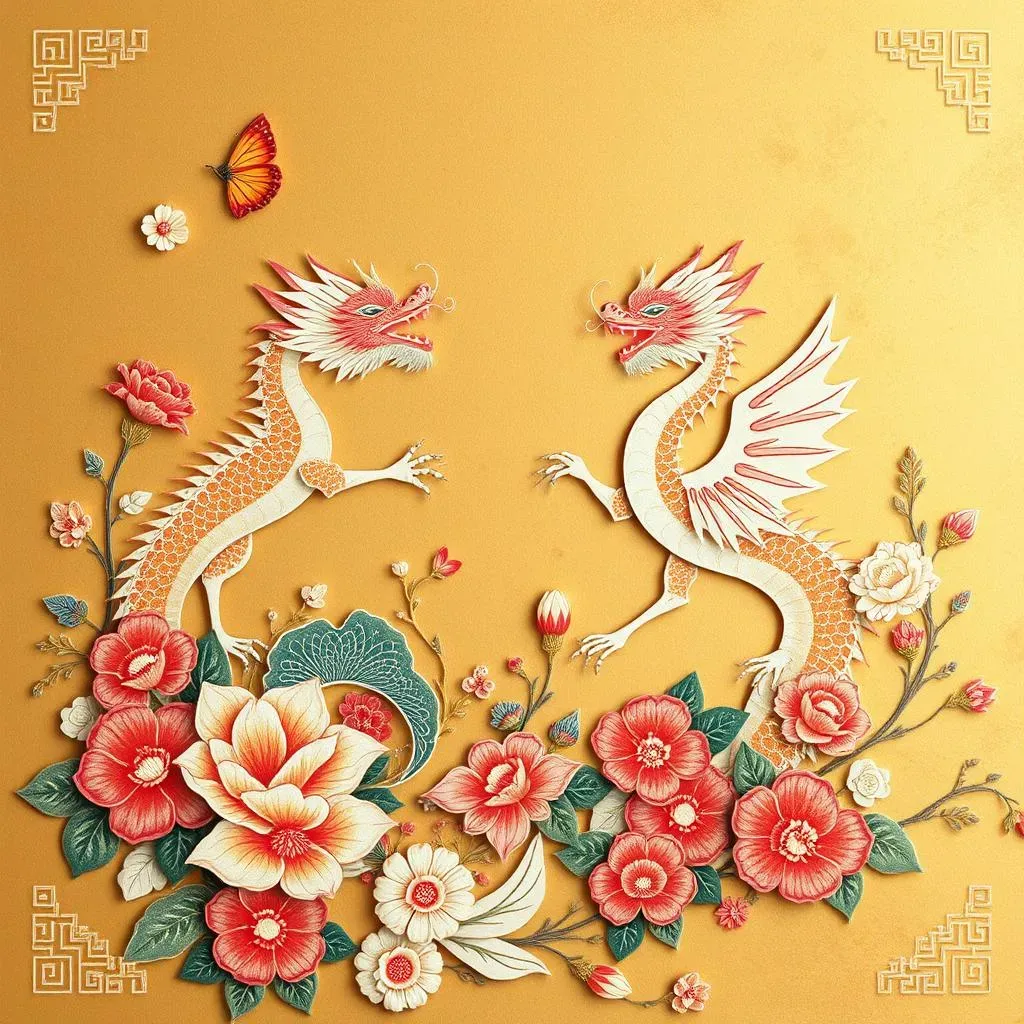Table of Contents
Have you ever admired the intricate beauty of Chinese paper cutting? Those delicate designs, the vibrant colors, the stories they tell – they're captivating! But have you ever wondered, "When did Chinese paper cutting start?" This article embarks on a journey through time to explore the fascinating history of this ancient art form. We'll unravel the mystery surrounding its origins, looking beyond the invention of paper itself to uncover the earliest forms and materials used. Then, we'll witness the explosion of paper cutting as paper became more readily available, transforming it from a ritualistic practice into a beloved folk art. Finally, we'll see how Chinese paper cutting has evolved and continues to thrive today, a testament to its enduring appeal and cultural significance. Prepare to be amazed as we delve into the rich tapestry of this timeless art, answering the question: when did Chinese paper cutting start, and how has it shaped Chinese culture and art throughout history?
The Origins of Chinese Paper Cutting: Tracing its Roots
The Origins of Chinese Paper Cutting: Tracing its Roots
Early Forms of Paper Cutting
Pinpointing the exact moment when Chinese paper cutting began is tricky, a bit like trying to find the very first snowflake in a blizzard! We don't have a definitive "aha!" moment, but we can trace its roots back surprisingly far. While the invention of paper in the 2nd century CE by Cai Lun is a crucial milestone, the art of cutting decorative shapes existed long before. Think about it – humans have always been creative! Long before paper, people used other thin materials to create intricate designs. Think delicate leaves, shimmering gold and silver foil, even supple silk. These were carefully cut and used for various purposes, from adorning hair to religious rituals. These early examples show the inherent human desire to create beauty and express ourselves through visual art. Archaeological discoveries have unearthed evidence of such cut-outs dating back to the 6th century, hinting at an even longer history that's still being uncovered. Imagine the sheer artistry involved, using materials far less forgiving than paper! It's a testament to the skill and dedication of these early artisans.
The earliest examples we find weren't necessarily what we'd recognize as paper cutting today, but they're the direct ancestors of the art form. They show a long tradition of cutting and shaping thin materials to create decorative patterns. This early history demonstrates that the artistry of paper cutting wasn't just a response to the invention of paper, but rather, a natural evolution of existing artistic traditions. It's a captivating glimpse into the ingenuity and artistic spirit of ancient cultures. To learn more about the tools used in paper cutting, check out our guide on essential paper-cutting tools.
Material | Era | Use |
|---|---|---|
Leaves | Pre-Han Dynasty | Decoration, Rituals |
Gold/Silver Foil | Pre-Han Dynasty | Hair Ornaments, Religious Items |
Silk | Pre-Han Dynasty | Clothing embellishments, ceremonial objects |
Early Uses and Symbolism
The earliest uses of these cut-outs weren't simply decorative. They were deeply intertwined with religious beliefs and ceremonies. Imagine the significance of carefully crafted designs adorning temples or used in ancestor worship. These weren't just pretty pictures; they were powerful symbols, conveying wishes for good fortune, prosperity, and protection. This deep connection to spirituality and ritual is an important part of understanding the origins of paper cutting. It wasn't just a craft; it was a vital part of daily life. The symbolism and meaning behind the designs were as important as the craftsmanship itself. Learning about the types of paper cutting can help you understand this further: types of paper cutting.
This early connection to ritual and spirituality is crucial in understanding why the art form persisted and evolved. The meaning behind the designs, the careful execution, and the connection to ancestral traditions all played a role in keeping this craft alive. It wasn't just about aesthetics; it was about expressing beliefs and connecting with something larger than oneself. Think about the impact of these early traditions – they laid the groundwork for the rich and diverse world of Chinese paper cutting we know today. Want to learn more about the history of paper itself? Read our article on where paper cutting originated.
- Religious ceremonies
- Ancestor worship
- Protective charms
- Symbolic representations of good fortune
Before Paper: Early Forms and Materials Used in Paper Cutting
Before Paper: Early Forms and Materials Used in Paper Cutting
Leaves and Other Natural Materials
Before the invention of paper, resourceful artisans utilized readily available materials to express their creativity. Imagine the delicate work involved in carefully cutting intricate designs from leaves! These weren't just any leaves; they were chosen for their thinness, flexibility, and perhaps even symbolic meaning. Think of the vibrant colors of autumn leaves, or the delicate shapes of certain plants. These natural materials offered a unique texture and aesthetic, influencing the style and techniques of early cutting. The process must have been painstaking, requiring incredible precision and patience. To learn more about choosing the right paper for your projects, check out our guide on choosing the right paper.
The limitations of these materials likely shaped the designs themselves. Think about it – a leaf's shape and size would dictate the possibilities. This suggests a level of adaptation and ingenuity, a kind of improvisational artistry that's truly fascinating. It's a reminder that art often arises from necessity, with artists making the most of the tools and materials at their disposal. Learning about different paper cutting techniques can help you appreciate this even more – check out our article on mastering paper cutting techniques.
- Leaves provided a readily available material.
- The material's properties influenced design choices.
- Early artisans showed incredible skill and adaptation.
Precious Metals and Fabrics: A Glimpse of Luxury
Not all early forms of paper cutting were as humble as leaf designs. Evidence suggests that precious metals, such as gold and silver foil, were also used to create decorative cut-outs. Imagine the opulence! These shimmering pieces were likely used for special occasions, religious ceremonies, or to adorn the clothing and accessories of the wealthy and elite. The level of craftsmanship required to work with such delicate materials would have been extraordinary, demanding a high level of skill and precision. These pieces offer a fascinating glimpse into the social and economic context of early paper cutting. For more intricate designs, you might find our guide on easy intricate designs helpful.
Similarly, silks and other fine fabrics were also incorporated into early forms of cut-out art. The flowing nature of silk would have offered unique design possibilities, allowing for more delicate and flowing patterns. The use of such luxurious materials further emphasizes the ritualistic and ceremonial importance of these early cut-outs. They were not merely decorative; they represented status, wealth, and a connection to the spiritual realm. Want to explore more advanced projects? Check out our article on master paper cutting projects.
Material | Significance | Typical Use |
|---|---|---|
Gold/Silver Foil | Wealth, Status, Spirituality | Religious ceremonies, adornment |
Silk | Luxury, Ceremonial Importance | Clothing embellishments, ritual objects |
The Evolution of Techniques and Designs
While we can't pinpoint the exact "beginning" of Chinese paper cutting, the evidence suggests a gradual evolution of techniques and designs. Early artisans likely experimented with different materials, tools, and techniques, refining their skills over generations. This process of experimentation and adaptation is crucial to understanding the development of the art form. It wasn't a sudden invention but rather a continuous process of refinement and innovation. The development of more sophisticated tools and techniques likely led to more complex and intricate designs. For a detailed look at tools, see our post on essential paper cutting tools.
The transition from simple shapes cut from leaves to more elaborate designs using metals and fabrics likely involved a gradual refinement of skills and techniques. We can imagine artisans passing down their knowledge and expertise through generations, constantly pushing the boundaries of what was possible. This continuous evolution is what makes the history of Chinese paper cutting so rich and fascinating. Looking at the various types of paper cutting provides a great understanding of this evolution – check out our article on different types of paper cutting.
- Gradual development over centuries
- Experimentation with materials and tools
- Refinement of techniques across generations
The Rise of Paper Cutting After Paper's Invention: A New Era
The Rise of Paper Cutting After Paper's Invention: A New Era
A New Medium, New Possibilities
The invention of paper in the 2nd century CE by Cai Lun was a game-changer! Suddenly, a readily available, relatively inexpensive, and versatile material was at everyone's disposal. This is where the story of paper cutting really takes off. Imagine the excitement – a material perfectly suited for cutting intricate designs! No more painstaking work with leaves or precious metals. Paper offered a new level of accessibility, allowing the art form to spread beyond the elite and become more widespread. This democratization of the art form is a key moment in its history. It's like the invention of the printing press for books – suddenly, more people could access and create art.
The properties of paper—its smooth surface, even thickness, and ease of cutting—allowed for far greater detail and complexity in designs. Artisans could create more intricate patterns, finer lines, and more elaborate scenes. It was like unlocking a whole new world of artistic expression. This newfound freedom fueled innovation, leading to a rapid diversification of styles and techniques. To explore different styles, you might like our article on paper cutting types.
- Paper's affordability made the art more accessible.
- Its properties allowed for more intricate designs.
- It fueled innovation and diversification of styles.
From Ritual to Everyday Life: The Spread of Paper Cutting
As paper cutting became more accessible, its uses expanded beyond religious rituals. It started appearing in everyday life, adorning homes, celebrating festivals, and marking special occasions like weddings and births. Paper cuts became a way to express joy, hope, and good wishes. Think of the vibrant red paper cuts associated with Chinese New Year, symbolizing luck and prosperity. These weren't just decorations; they were powerful symbols, imbued with cultural meaning and tradition. For more festive ideas, check out our post on paper cutting decorations.
The ease of creating paper cuts also meant that more people could participate in the art form, leading to a flourishing of regional styles and traditions. Different regions developed their own unique aesthetic, reflecting local customs and beliefs. This regional variation is a testament to the adaptability and enduring appeal of paper cutting. It's a beautiful example of how a single art form can adapt and evolve while retaining its core essence. For more information on tools, see our guide on essential paper cutting supplies.
Era | Use | Symbolism |
|---|---|---|
Tang Dynasty | Religious, decorative | Spiritual themes, good fortune |
Song Dynasty | Household decoration, celebrations | Joy, prosperity, family unity |
Chinese Paper Cutting Today: Evolution and Continued Popularity
Chinese Paper Cutting Today: Evolution and Continued Popularity
Modern Interpretations and Innovations
While traditional techniques remain cherished, contemporary artists are pushing boundaries, infusing new life into this ancient art. Think vibrant color palettes, unexpected materials, and bold, modern designs. Some artists are blending paper cutting with other art forms, such as digital art or sculpture, creating truly unique pieces. Others are exploring new themes, reflecting modern life and experiences. This fusion of tradition and innovation is exciting to witness; it ensures that paper cutting remains relevant and engaging for new generations.
The accessibility of digital tools has also played a role in this evolution. Software allows artists to create incredibly precise and intricate designs, pushing the boundaries of what's possible. Digital tools also facilitate collaboration and the sharing of designs, fostering a global community of paper-cutting enthusiasts. It's amazing how technology can enhance and expand upon traditional craftsmanship. To see some inspiring modern designs, check out our article on intricate designs.
- Blending with other art forms
- Exploring new themes and styles
- Use of digital tools for design and collaboration
Global Reach and Enduring Appeal
Chinese paper cutting is no longer confined to China; its beauty and artistry have captivated audiences worldwide. Workshops and classes are popping up globally, teaching people of all ages the skills and techniques of this ancient craft. This global spread has led to a fascinating exchange of ideas and influences, with artists from different cultures incorporating their own unique styles and perspectives into paper cutting. It's a beautiful example of cultural exchange and artistic collaboration.
Despite the rise of digital media and other art forms, the appeal of hand-cut paper continues to resonate. There's something deeply satisfying about the tactile nature of the craft, the precision required, and the unique beauty of each piece. The enduring popularity of paper cutting highlights its timeless appeal and its ability to connect people across cultures and generations. It's a testament to the enduring power of art and craftsmanship. For those looking to learn, check out our guide on beginner paper cutting classes.
Region | Influence | Unique Characteristics |
|---|---|---|
Japan | Kirigami | Emphasis on geometric patterns |
Europe | Scherenschnitte | Intricate silhouettes, folk art themes |
